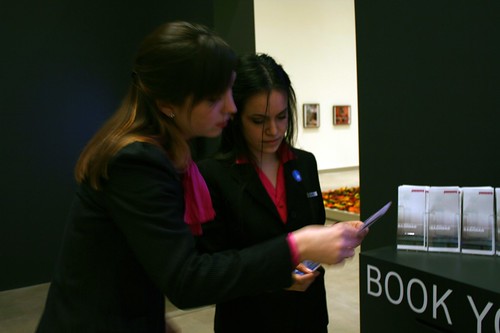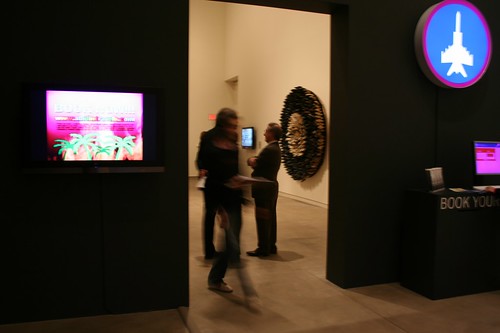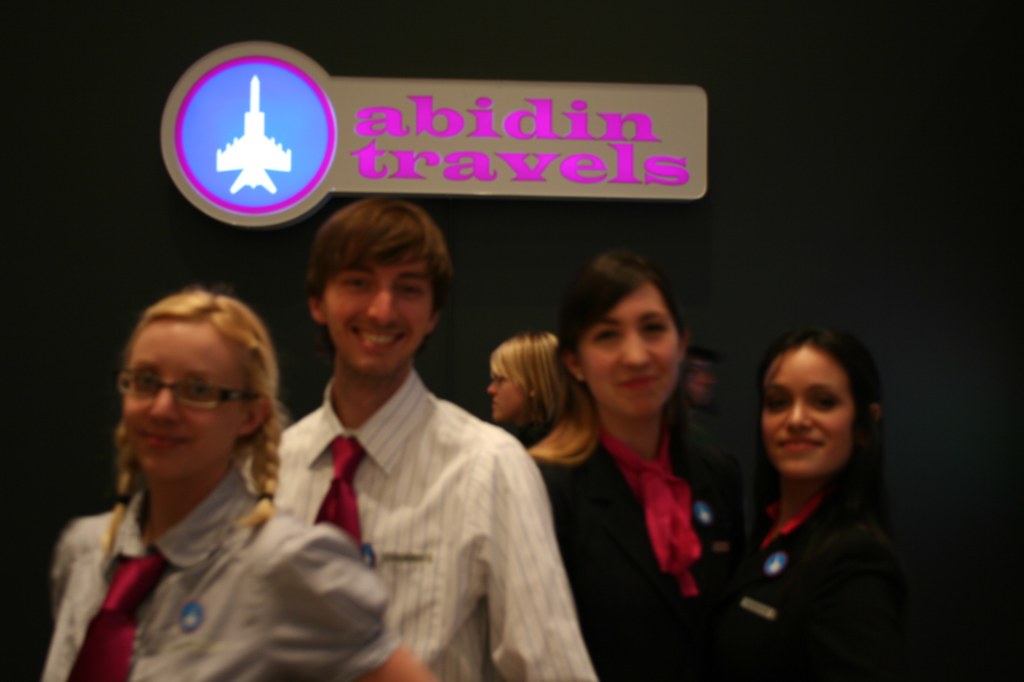If I haven't mentioned it before, I am quite the fan of awful horrible animated gifs. As I continue to work with seeNoga and Rio Yañez on the Jewish characters from Acciones Plásticas プリクラ: The Jewess Blogging Queen, The Avodah Girl and The 612er; I thought I would share this terrible image created early on in our collaboration. There is also another version (which I can no longer find) where in last frame of the gif sequence, it rains diet cokes. :)
a guest post by seenoga
a guest post by seeNoga.
As you doggedly pursue, chase, and snap at the heels of your Self, you do so knowing there is no chance you will ever catch up. For each of us, throughout our individual lives, we will be ever distant from knowing our own selves. When a person pursues his or her Self in an aggressive, determined way, the resulting hyperactive sensibility allows for a greater adaptability and sensitivity. This flexibility can be useful in contemporary human life, but only to a certain extent. It is also due to the fast-paced nature of today’s engineered environments, that there is a strong tendency (especially among young people) to go to extreme lengths in order to sustain within their own lives the hyperactivity and intensity they witness in popular culture and media. Consider the called-for constant reachability via cell-phones and laptops, as well as many other forms of expedition in our ‘lived-in’ world. These accommodations range from aerodynamics to ATMs. As many workers in today’s professional world simultaneously lament and extol their parasitic relationships with a Blackberry or other such Pocket God, I, too, have at many times felt chained to my laptop (i.e. the Internet), fearing I would miss something absolutely critical. Unfortunately, the fact that missing anything important has not happened for the most part, hardly affects the worry and anxiety that it might happen.Yet still, it seems, this once motivating anxiety is becoming a repressed urge, one which is less and less a bother, the more my environment becomes one seamless, semi-omniscient “news” feed. On the evening of President Barack Obama’s Address to the Nation, Maya Escobar recorded “Obama Tweet: How a New Generation Gets Their Information.” In this video Escobar documented a particular event, an important cultural event, one which incidentally brought the use of Twitter to the fore in popular culture.[youtube= http://www.youtube.com/watch?v=359HwupsY1s]
Obama Tweet: How a New Generation Gets Their Information, 2008
I was with Escobar on this evening and was struck by the depth of her interaction with the digital realm. She was sitting in front of a T.V. broadcast of the speech, while she was also further mediating that media via her computer, on which she was following Twitter and CNN.com’s coverage of the event. Beyond all that, Escobar was creating her own real-time, indexical document of the event on television along with CNN and Twitter as instantaneous forms of annotations to the President's speech. Escobar was watching, sitting one more stage removed, behind the lens of a video camera. Because of the way in which she layered the television screen the computer screen and then the interface of any viewer's monitor, Escobar has effortlessly choreographed a multi-layered, engagement with the very most current of events. However, though I may have somewhat qualified and rationalized instant-communication tools, I still believe there must be a deliberate effort to complement those socially-prescribed media with other, independent forms of digital exchanges. While I do believe in the great social potential of our rapidly advancing communications media, my work seeks to push and pull on parts of these evolving global ‘informachines,’ in an effort to challenge the omnipresence of commercial media.[youtube=http://www.youtube.com/watch?v=d0ZvYQOp89I]
Look Out, 2008
That sort of layering of non-dimensional spaces is unique to the contemporary world, with the inception of digital technologies, and this collage-like aesthetic is of great interest to the work of Maya Escobar, as much as it is to my own. Although, unlike the deceptively referential works of my counter-part, in many of my works, I use and refer to popular media sources and specific Internet sites indirectly and rarely with any superficial visibility. It is with great deliberation and much hypothesizing that I curate my works in the manner in which I do. I intend my works to avoid specificity and leave wide-open their readings to a much more self-guided analysis by viewers. In the piece “Look Out,” the projected video came directly from YouTube. I simply cut off the last second of the original video, thus shortening it to 17 seconds. I then prepared it as a video-loop for its installation underneath a staircase at the Mildred Lane Kemper Art Museum. Because of its placement, where it fills a theretofore, unaddressed space, it is as though the rolling image is part of the museum structure itself. The particular clip, which I chose after viewing dozens of similarly tagged videos (‘storm,’ ‘tree,’ ‘willow,’ and ‘weeping’), was selected for very specific compositional reasons; reasons which are the very same principles of design taught to anyone working in commercial design or the visual arts: complimentary colors, rule of thirds, dynamic composition and varied textures, to name a few. Because of my focused selection process, this video, although created for very different (and unknown) reasons, still fits very well into the installation space as a deliberately designed, and potentially permanent use of what is otherwise a neglected space. The video became part of the stairwell. By existing within a predetermined, architectural frame, it became part of the space, as opposed to sitting on the surface as a painting does. This projection did not exist in the way that many (most) installations do: as obvious alterations or obtrusive interjections into a space. This work asserts itself as a physical part of the space, as the projector beams through from behind the scrim in the stairwell. It also assumes a living presence, as it reiterates itself, by many reflections and refractions, split and scattered, bouncing around the main hall of the museum. The video functioned as a decorative element but also an illusory window to an outside world, whereas, the space without that piece is simply a pane of glass that looks into the shadowy crotch of a stairwell. I do not mean every square inch should be taken up for some sort of visual activity or illusionary window. Simply, this work proposes how our constructed spaces, in this case a venue for art viewing, might be reinterpreted. Insofar as, a corner can conceivably become a window, as illusory and impermanent as my particular interpretation may be.
*NOESCO is seeNoga and maya escobar
Fritz and Carianne: Litter and Paper Airplanes
[youtube=http://www.youtube.com/watch?v=aicKK2IkQzg][youtube=http://www.youtube.com/watch?v=6wyLF3DXK4I]
People's Hopes
There have been some wonderful submissions to togetherwehope.com. Here are some examples. Visit togetherwehope.com to share your hopes for the future.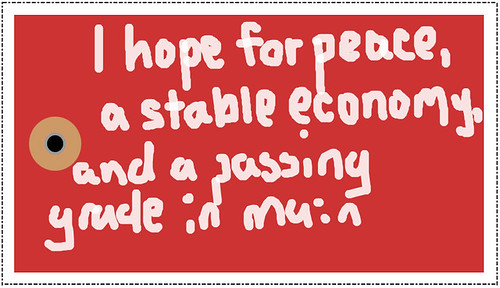
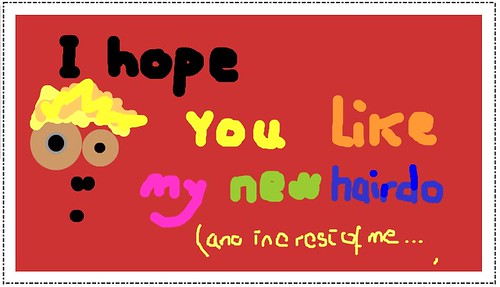
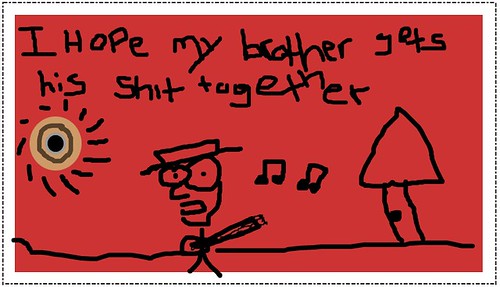
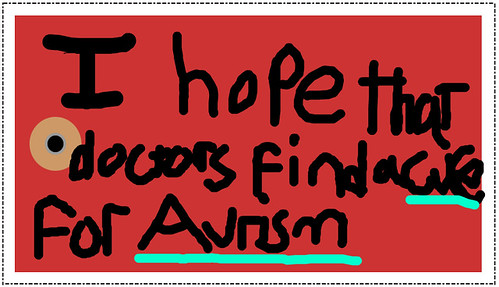
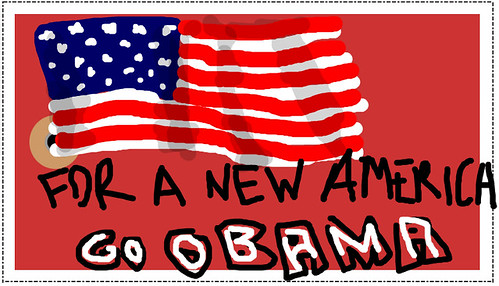
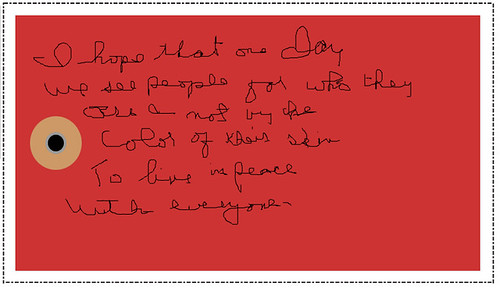
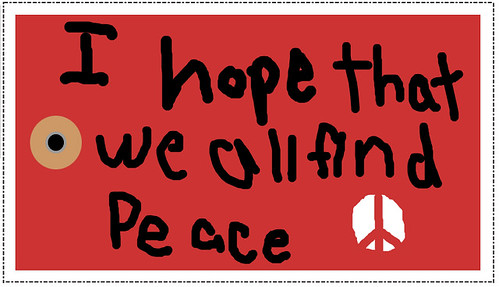

Washington University in St. Louis MFA Open Studios
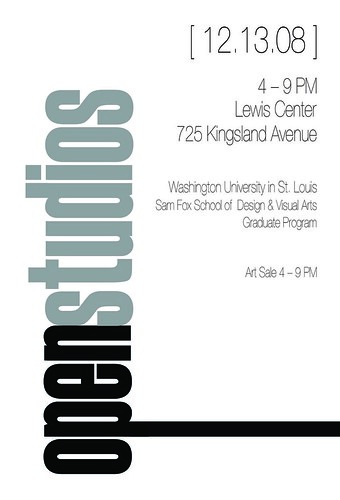 Washington University Graduate Open Studios and Art Sale Saturday, December 13th, 2008 Open Studios: 4-9 p.m. Lewis Center725 Kingsland_____________________________________________________________________Washington University MFA students are pleased to announce our Fall 2008 Open Studios and Art Sale, featuring work by more than 40 innovative young artists working in painting, printmaking, photography, sculpture, combined media, installation and video.From 4-9 our studios will be open to the public and artists will be present to answer questions and interact with visitors. This event presents a unique opportunity to experience the work of emerging artists outside the traditional gallery setting. The event will be accompanied by an art sale from 4-9:00 pm.The art sale will take place on the third floor of the MFA Building and will feature original works by MFA students. Payments may be made in cash, or by check with ID only. Proceeds will benefit the Washington MFA Student Organization and will be put towards the growth and development of the MFA program as well as to the individual artist.The Graduate Program has been flourishing at Washington University. Housed in the distinctive Lewis Center in the heart of University City, MFA students and faculty interact in a collaborative, organic setting, creating a program that is always evolving and pushing the boundaries of contemporary artistic practice. Please join us for this unique event.
Washington University Graduate Open Studios and Art Sale Saturday, December 13th, 2008 Open Studios: 4-9 p.m. Lewis Center725 Kingsland_____________________________________________________________________Washington University MFA students are pleased to announce our Fall 2008 Open Studios and Art Sale, featuring work by more than 40 innovative young artists working in painting, printmaking, photography, sculpture, combined media, installation and video.From 4-9 our studios will be open to the public and artists will be present to answer questions and interact with visitors. This event presents a unique opportunity to experience the work of emerging artists outside the traditional gallery setting. The event will be accompanied by an art sale from 4-9:00 pm.The art sale will take place on the third floor of the MFA Building and will feature original works by MFA students. Payments may be made in cash, or by check with ID only. Proceeds will benefit the Washington MFA Student Organization and will be put towards the growth and development of the MFA program as well as to the individual artist.The Graduate Program has been flourishing at Washington University. Housed in the distinctive Lewis Center in the heart of University City, MFA students and faculty interact in a collaborative, organic setting, creating a program that is always evolving and pushing the boundaries of contemporary artistic practice. Please join us for this unique event.
Hope in the STL POST
'Hope' springs anew for Washington University grad students
 November 19, 2008 -- Carianne Noga, a graduate student of art at Washington University, ties tags of hope onto a sculpture outside the University City Post-Office. Noga and fellow student Maya Escobar started soliciting people's hopes to place on the sculpture. (Christian Gooden/P-D)By Margaret GillermanST. LOUIS POST-DISPATCH11/29/2008UNIVERSITY CITY — Georgia O'Keeffe found inspiration in the light and shapes of New Mexico. Mary Cassatt found hers in mothers and children. Maya Escobar and Carianne Noga, two graduate students at Washington University's Sam Fox School of Art and Design, found inspiration for their latest project from the long lines on Election Day at a Ben and Jerry's ice cream shop in the Loop.There, on the sidewalk outside the shop, which was giving away scoops of ice cream to voters, the two women felt excitement and hope among voters. They said they found that same feeling across the street in the long line of voters waiting to vote at the Loop polling place."We wanted to continue that moment and not let it peak out," Noga said.Before the polls closed, they had begun to create their "I hope…" project.They first staked out a site: outside the University City Post Office at 561 Kingsland Avenue.They then provided people with bright red tags and paint markers for them to write down their hopes for a better future.The tags then are affixed to a permanent lattice wood sculpture already on site outside the Post Office."As difficult as it can be sometimes to voice our wishes and dreams, it can be strengthening," the artists say in explaining their mission. "We can be reminded of the rest of the world outside our own immediate concerns. In this period of great change and near infinite possibilities, it is time for us to voice our hopes."While the project is for all people, Escobar said it holds special meaning for young people."This is our moment to make a difference for our communities," Escobar said. "We need to be aware — of our national situation, of the economy."Many of the hopes expressed — most recorded anonymously — so far are noble and universal: "I hope for world peace" and "My hope is that hate is no longer."Some of the hopes are personal. "I hope to not fear death," wrote one.Others have a distinctly political bent: "I hope we get out of Iraq and don't go to war with Iran." And some are just fun, like the person hoping for "chocolate cake for dessert ..."A University City police officer named Hope — Reginald Hope — shared with them his own hope: for safety for police officers. A fellow officer was killed while on duty near the Loop last month.Washington University Chancellor Mark Wrighton gave his hope and "wishes for better health and greater prosperity for all."The artists also are encouraging people to submit their hopes online at togetherwehope.com.The existing sculpture outside the post office was designed in 2005 by an undergraduate architectural design studio taught by Carl Safe in the Washington University School of Architecture. University City resident Ethel Sherman had asked Safe to help create a sculpture in memory of her husband William Sherman, a Washington University biochemist who died about five years ago."It's strong like Bill and peaceful and quiet," she said. Sherman said she's thrilled about adding "I hope..." to it."This is an exciting time of change and hope," said Sherman, a retired psychologist and teacher who worked for 10 years at the Loop's Craft Alliance.The artists, both 24, come from family traditions of public service and political idealism."I grew up under the table of political meetings," says Escobar, remembering her childhood in Chicago. "My friends and I formed our first political organization when we were 11 — Students Against Child Oppression — on behalf of children in sweatshops in Mexico."Her mother is a school nurse, and her father, an educator, hosts a radio show in Chicago called "Si, Se Puede," which means "Yes, We Can." The program has been around since 1996.Noga grew up in the Washington, D.C., area and in Georgia. Her father is a psychiatrist at a state hospital, and her mother is a library director.Both artists are second-year graduate students in the two-year master's of fine arts program.The project will remain up through January. Later, the tags can be relocated to other sites and the online site will remain.University City has embraced the "I hope ..." project, according to city manager Julie Feier."It's an inspiring project," she said.
November 19, 2008 -- Carianne Noga, a graduate student of art at Washington University, ties tags of hope onto a sculpture outside the University City Post-Office. Noga and fellow student Maya Escobar started soliciting people's hopes to place on the sculpture. (Christian Gooden/P-D)By Margaret GillermanST. LOUIS POST-DISPATCH11/29/2008UNIVERSITY CITY — Georgia O'Keeffe found inspiration in the light and shapes of New Mexico. Mary Cassatt found hers in mothers and children. Maya Escobar and Carianne Noga, two graduate students at Washington University's Sam Fox School of Art and Design, found inspiration for their latest project from the long lines on Election Day at a Ben and Jerry's ice cream shop in the Loop.There, on the sidewalk outside the shop, which was giving away scoops of ice cream to voters, the two women felt excitement and hope among voters. They said they found that same feeling across the street in the long line of voters waiting to vote at the Loop polling place."We wanted to continue that moment and not let it peak out," Noga said.Before the polls closed, they had begun to create their "I hope…" project.They first staked out a site: outside the University City Post Office at 561 Kingsland Avenue.They then provided people with bright red tags and paint markers for them to write down their hopes for a better future.The tags then are affixed to a permanent lattice wood sculpture already on site outside the Post Office."As difficult as it can be sometimes to voice our wishes and dreams, it can be strengthening," the artists say in explaining their mission. "We can be reminded of the rest of the world outside our own immediate concerns. In this period of great change and near infinite possibilities, it is time for us to voice our hopes."While the project is for all people, Escobar said it holds special meaning for young people."This is our moment to make a difference for our communities," Escobar said. "We need to be aware — of our national situation, of the economy."Many of the hopes expressed — most recorded anonymously — so far are noble and universal: "I hope for world peace" and "My hope is that hate is no longer."Some of the hopes are personal. "I hope to not fear death," wrote one.Others have a distinctly political bent: "I hope we get out of Iraq and don't go to war with Iran." And some are just fun, like the person hoping for "chocolate cake for dessert ..."A University City police officer named Hope — Reginald Hope — shared with them his own hope: for safety for police officers. A fellow officer was killed while on duty near the Loop last month.Washington University Chancellor Mark Wrighton gave his hope and "wishes for better health and greater prosperity for all."The artists also are encouraging people to submit their hopes online at togetherwehope.com.The existing sculpture outside the post office was designed in 2005 by an undergraduate architectural design studio taught by Carl Safe in the Washington University School of Architecture. University City resident Ethel Sherman had asked Safe to help create a sculpture in memory of her husband William Sherman, a Washington University biochemist who died about five years ago."It's strong like Bill and peaceful and quiet," she said. Sherman said she's thrilled about adding "I hope..." to it."This is an exciting time of change and hope," said Sherman, a retired psychologist and teacher who worked for 10 years at the Loop's Craft Alliance.The artists, both 24, come from family traditions of public service and political idealism."I grew up under the table of political meetings," says Escobar, remembering her childhood in Chicago. "My friends and I formed our first political organization when we were 11 — Students Against Child Oppression — on behalf of children in sweatshops in Mexico."Her mother is a school nurse, and her father, an educator, hosts a radio show in Chicago called "Si, Se Puede," which means "Yes, We Can." The program has been around since 1996.Noga grew up in the Washington, D.C., area and in Georgia. Her father is a psychiatrist at a state hospital, and her mother is a library director.Both artists are second-year graduate students in the two-year master's of fine arts program.The project will remain up through January. Later, the tags can be relocated to other sites and the online site will remain.University City has embraced the "I hope ..." project, according to city manager Julie Feier."It's an inspiring project," she said.
[email protected] | 314-725-6758
together we hope
[youtube=http://www.youtube.com/watch?v=ZcwPoFPdeVM]The polling lines were LONG in STL, I waited over 4 hrs to vote! But it was well worth it, I have never been more proud to be an american and to take part in such an important moment in history.The night of the elections, Carianne and I initiated our project together we hope with the help of our friend Becky Potts. We passed out red tyvek tags and asked people to write down their hopes for the future. We tried to encourage them to go beyond "I hope Obama wins" or I hope McCain wins".People wrote things ranging from "I hope I get good grades" to "I hope that we end the war in Iraq and do not go to war win Iran."Check out this website we created where you can submit your hopes online. We will make a tag for each hope submitted...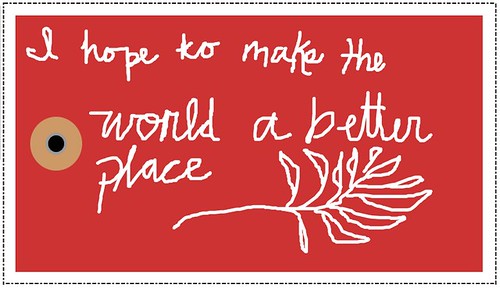
ARTE ≠ VIDA: ACTIONS BY ARTISTS OF THE AMERICAS
Last weekend Carianne and I went to NY for the 2008 Whitney Biennial. As we expected from a survey of Contemporary American Art, not everything in the exhibition appealed to us. However neither of us was disappointed because we were not expecting to be unilaterally wowed. Upon leaving the Whitney, we got into an in-depth discussion about individuals' preconceived expectations, and the role they play in the determining interaction/interpretation/enjoyment, with actual works of art. Soon after this conversation, I was put to the test. As any young MFA student (traveling to New York) who has any hopes of some day having a career, Carianne and I were preparing to leave our hotel, to visit the elusive Chelsea Galleries, when I came upon an announcement for a show at El Museo Del Barrio, ARTE ≠ VIDA: ACTIONS BY ARTISTS OF THE AMERICAS
“Arte no es vida” surveys, for the first time ever, the vast array of performative actions created over the last half century by Latino artists in the United States and by artists working in Puerto Rico, the Dominican Republic, Cuba, Mexico, Central and South America.
Many of the works included in Arte ≠ Vida have subtle or overt political contexts and content: military dictatorships, civil wars, disappearances, invasions, brutality, censorship, civil rights struggles, immigration issues, discrimination, and economic woes have troubled the artists’ homelands continuously over the past four decades and therefore have infiltrated their consciousness. According to curator Deborah Cullen, “the exhibition title challenges the commonplace idea that art is equivalent to life, and life is art. What is proposed through these many works is that while art affirms and celebrates life with a regenerative force, and sharpens and provokes our critical senses, artistic actions which address inequalities and conflict are not equivalent to real life endured under actual repression.”
Over 75 artists and collectives are represented in Arte ≠ Vida, including ASCO, Tania Bruguera, CADA, Lygia Clark, Papo Colo, Juan Downey, Rafael Ferrer, Guillermo Gómez-Peña, Alberto Greco, Alfredo Jaar, Tony Labat, Ana Mendieta, Marta Minujin, Raphael Montañez-Ortiz, Hélio Oiticica, Tunga and contemporary practitioners including Francis Alÿs, Coco Fusco, Regina José Galindo, Teresa Margolles and Santiago Sierra. The exhibition is arranged in four major sections, in which each decade is represented by several specific themes that often cross national boundaries. 1960-1970 looks at select precursors, signaling, destructivism and neoconcretismo; 1970-1980 considers political protest, class struggle, happenings, land/body relationships and border crossing; 1980-1990 focuses upon anti-dictatorship protest and dreamscapes; and 1990-2000 references the Quincentenary, multiculturalism, postmodernism and endurance. An additional section highlights interventions that artists have carried out on television over the past 20 years. In these chronological, thematic groupings, viewers will be able to explore the interconnections among various artists’ actions as well as the surges of activities triggered by specific events in certain countries.
I didn't know what to do. This sounded to good to be true, but we also knew we were supposed to visit the Chelsea Galleries. I considered just buying the catalogue to the exhibition and skipping the show. I don't know if it was faith or instinct that got us there, but I can say with out any doubt in my mind that this was single handedly the best exhibition I have ever attended.
"¿Quién puede olvidar las huellas?," Regina Galindo. 2003.
Galindo walking through the streets of downtown Guatemala City, wetting her feet in a blood-filled bucket, and leaving a path of footprints from the Constitutional Court building to the Presidential Palace, where she was welcomed by a police battalion. The Court had just validated former dictator Efraín Ríos Montt, the country’s foremost author of genocide, as a presidential candidate.
[youtube="http://uk.youtube.com/watch?v=D46p71QdCTc"]

Oscar Bony (1941-2002) hired a working-class family at twice their going wage to pose in a Buenos Aires gallery as a living work of art
[youtube=http://uk.youtube.com/watch?v=8N5xbLtokZY]
"Arte Reembolso/Art Rebate" by Elizabeth Sisco, Louis Hock and David Avalos. 1993.


[...] "The current economic recession has been debilitating for many artists regardless of the content of their work. Since this climate is characterized by a particular hostility toward controversial art, it is especially significant that Elizabeth Sisco. Louis Hock. and David Avalos have maintained a reputation for causing trouble in San Diego. Their collaborative public art projects receive scandalous reports in local and national news media and are often used as examples of the National Endowment for the Art' inadequate standards of quality. Their most current collaborative project Art Rebate (1993) refunded $10 bills to 450 undocumented workers along the San Diego, California/Mexico border. It was commissioned by the Museum of Contemporary Art, San Diego and Centro Cultural de la Raza as part of the "La Frontera/The Border" exhibition. In response to recent attention to border relations due to NAFTA and other government policies, the artists wished to refute the popular misconception that undocumented Mexican workers do not pay taxes as well as demonstrate. albeit with a small symbolic gesture, their appreciation of the undocumented as valued members of Western states, communities. Furthermore, I believe their work has significant implications for undocumented workers from other nations, residing in other regions of the United States - Caribbean workers in Florida and New York City, for example. If the communities in which the undocumented workers from these areas work and reside could also acknowledge their common contributions, in the form of taxes among other things, then perhaps we as a society could also begin to address the crimes inflicted upon these groups and apply our democratic notions of human rights to those within our national borders. [...]
"The projects are clearly controversial. That's not an accident. It's not as if someone latches onto the projects and holds them up as problematic. We intend to create something that is provocative and engenders a public discussion. It is public art, not art in the public. The work is defined by its performance in the community. The public discussion is crucial to the project. In order to begin a discussion we initiate an action - for example, a bus poster or a $10 rebate - that starts the ball rolling. We definitely aim to draw in the broadest spectrum of people, including those in power for the discussion. Obviously the media is not a neutral mechanism for communicating the events that unfold during the projects: it has an agenda that shapes its participation in the discussion. For example, much of the language used to describe Art Rebate in the press was the same inflammatory rhetoric promoted and laid out by the politicians who had given a profile of blame to the undocumented. Similarly, the press had a hard time imagining, and therefore was unable to fairly convey, the undocumented as taxpayers. The press was invited to experience the act of rebating these signed $10 bills. They were encouraged to ask the opinion of undocumented workers concerning their status as taxpayers, but the responses failed to appear prominently in the news media. The media coverage was not a means of evaluating the project but rather a component of the project. Their viewpoints describe a conceptual social space in which they situate the taxpayer and the undocumented in different realms."
"The Parthenon of Books/Homage to Democracy, Buenos Aires," Marta Minujín. 1983.
In December 1983 the Argentine Conceptual artist Marta Minujin and a group of helpers spent 17 days building a full-scale model of the Parthenon in a public park in Buenos Aires, Roberta Smith writes. Except for a metal scaffolding, it was made almost entirely of books wrapped in plastic. All the books had been banned by one of the most oppressive juntas in the country’s history, which was just being dismantled after Argentina’s first democratic election in a decade. “The Parthenon of Books/Homage to Democracy,” as Ms. Minujin’s work was titled, stood for about three weeks. Then the public was allowed to disassemble the piece and keep the books.
partenon de libros marta minujinAvenida 9 deJulio y Avenida Santa Fe. Buenos Aires. Argentina. Concebida como un monumento a la democracia y a la educación por el arte, Partenón constaba una estructura metálica, réplica del partenón, recubierta con prohibidos durante la dictadura militar.


[...]In a similar fashion to the live human spectacles of the past, Fusco and Gomez-Peña performed the role of cultural "other" for their museum audiences. While on display the artists' "traditional" daily rituals ranged from sewing voodoo dolls, to lifting weights to watching television to working on laptop computers. During feeding time museum guards passed bananas to the artists and when the couple needed to use the bathroom they were escorted from their cage on leashes. For a small donation, Fusco could be persuaded to dance (to rap music) or both performers would pose for Polaroids. Signs assured the visitors that the Guatinauis "were a jovial and playful race, with a genuine affection for the debris of Western industrialized popular culture . . . Both of the Guatinauis are quite affectionate in the cage, seemingly uninhibited in their physical and sexual habits despite the presence of an audience." Two museum guards from local institutions stood by the cage and supplied the inquisitive visitor with additional (equally fictitious) information about the couple. An encyclopedic-looking map of the Gulf of Mexico, for instance, showed the supposed geographic location of their island. Using maps, guides, and the ambiguous museum jargon, Fusco and Gomez-Peña employed the common vocabulary of the museum world to stage their own display[...]
"Construction of a Traditional Rural Oven,'' Víctor Grippo y Jorge Gamarra. 1972.
CONSTRUCCION DE UN HORNO POPULAR PARA HACER PAN
Intención: Trasladar un objeto conocido en un determinado entorno y por determinada gente, a otro entorno transitado por otro tipo de personas.Objeto: Revalorizar un elemento de uso cotidiano, lo que implica, además del aspecto constructivo escultórico, una actitud.Acción:a) Construcción del Hornob) Fabricación del Panc) Partición del Pan.Resultante pedagógica: Describir el proceso de construcción del Horno y de la fabricación del Pan. Distribuir una hoja. Será posible la participación del público mediante un intercambio de información.
"Untitled (Body Tracks),'' Ana Mendieta. 1974.

abidin travels
 (above)Willie Cole, The Difference between Black and White,2005-6. Shoes, wood, metal, screws, and staples, 85 x 16".
(above)Willie Cole, The Difference between Black and White,2005-6. Shoes, wood, metal, screws, and staples, 85 x 16".
ST. LOUIS, MO - War and disaster have profoundly shaped the opening years of the 21st century. In the United States and abroad, acts of violence and terrorism as well as natural catastrophes have resulted in large-scale destruction and displacement affecting the lives of millions. In February, the Mildred Lane Kemper Art Museum at Washington University in St. Louis will present On the Margins, an exhibition exploring the impact of war and disaster through the work of a diverse range of contemporary artists. Curated by Carmon Colangelo — a nationally known printmaker as well as dean of the university's Sam Fox School of Design & Visual Arts — the exhibition will showcase more than a dozen works, ranging from prints and photographs to video and large-scale installations, by ten artists from around the world. Several installations play against traditional approaches to war memorial. For example, Fallen (2004-ongoing), by the American artist Jane Hammond, comprises a large field of brightly colored leaves, each bearing the name of a soldier killed in Iraq. Similarly elegiac is Metal Jacket (1992/2001), by South Korea's Do-Ho Suh, which consists of 3000 dog tags stitched to the liner of a U.S. military jacket. Abidin Travels: Welcome to Baghdad (2006), an interactive video installation by the Iraqi expatriate Adel Abidin, allows viewers to become virtual tourists amidst the wreckage of his native Baghdad.
In conjunction with the exhibition MFA candidates Carianne Noga, Dan Solberg, Erica Millspaugh and I assumed the role of travel agents assisting museum visitors in arranging their virtual flight Baghdad aboard a B52.